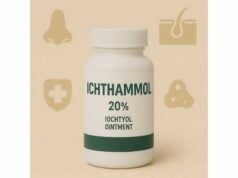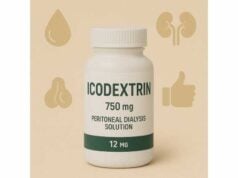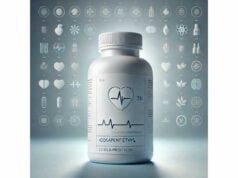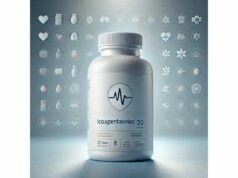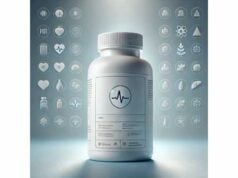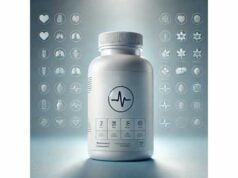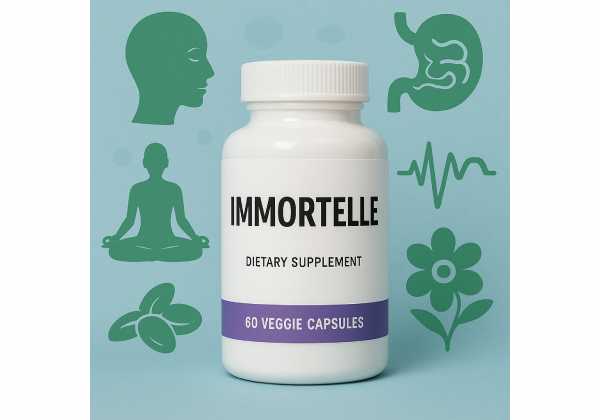
“Immortelle” usually refers to two closely related Mediterranean wildflowers in the Helichrysum genus—most often Helichrysum italicum (everlasting/Italian strawflower) and, in Central and Eastern Europe, Helichrysum arenarium (sandy everlasting). Both have a long heritage in herbalism, though they are used differently. H. italicum is best known for its aromatic essential oil and extracts used topically for skin comfort, bruising appearance, and post-procedure care. H. arenarium is typically prepared as a flower infusion (tea) for digestive and biliary discomfort such as fullness after meals. Modern lab studies map anti-inflammatory, antioxidant, and antimicrobial actions to compounds like neryl acetate, italidiones, arzanol, and flavonoids. Human studies exist but remain limited. This guide explains what each species can realistically do, how to select the right form, how to dose safely, who should avoid it, and what evidence supports common claims today.
Fast Facts
- Topical immortelle (H. italicum) supports skin comfort and appearance; digestive tea use is linked to H. arenarium.
- Typical topical dilution: 0.5–2% essential oil in carrier; cosmetic creams often use 0.2–3% plant extract.
- Typical tea dose: 3 g dried H. arenarium flowers infused in 150–200 mL, 1–3 times daily for short courses.
- Avoid if you have Asteraceae allergies, are pregnant or breastfeeding (oral), or take anticoagulants without medical guidance.
Table of Contents
- What is immortelle and which species matter?
- Does it work and what benefits hold up?
- How to use immortelle day to day
- How much to take and which forms?
- Safety risks and who should avoid it
- What the evidence shows and what is still missing
What is immortelle and which species matter?
“Immortelle” is a popular name for several Helichrysum species whose yellow flower heads dry without losing color. In health and beauty, two species dominate:
- Helichrysum italicum (H. italicum): A Mediterranean shrub distilled for essential oil and extracted for oil- and water-based cosmetic actives. Primary aroma/functional markers include neryl acetate (often a leading constituent in Corsican chemotypes), β-diketones (italidiones), and monoterpenes/sesquiterpenes. Topical use focuses on skin barrier comfort, the appearance of bruises and post-procedure marks, and soothing minor irritations.
- Helichrysum arenarium (H. arenarium): A European species known in pharmacopeias as Helichrysi flos. Prepared as infusions for dyspeptic complaints—post-prandial fullness, bloating, and sluggish bile flow. Key constituents include flavonoids (chalcones, flavanones) and phenolic acids.
Why two names matter
Products labeled “Immortelle” may contain H. italicum oil or extract (for skin) or H. arenarium flowers (for tea/digestive support). Verify the Latin binomial, plant part, and preparation on the label before purchase. The expected benefit—and the safe way to use it—depends on those details.
Common forms on the market
- Essential oil (H. italicum): Steam-distilled, highly concentrated, intended for diluted topical use.
- Cosmetic extracts (H. italicum): Oil-soluble and water-glycerin extracts standardized for compounds linked to skin barrier and comfort claims; added to creams/serums.
- Dried flowers and tea bags (H. arenarium): For hot water infusions or traditional decoctions; sometimes included in digestive blends.
- Capsules/tablets: May contain powdered H. arenarium or mixed Helichrysum extracts. Quality and standardization vary—seek third-party testing and clear marker content.
Chemotypes and quality
Helichrysum’s chemistry shifts with geography and harvest. Corsican H. italicum often shows higher neryl acetate, while other regions emphasize different terpenes. Reputable suppliers report GC–MS profiles (for oils) or assay markers (for extracts/teas). For H. arenarium, pharmacopeial monographs specify identity and purity for flowers used as tea.
Takeaway: Know your species and form. H. italicum = topical aromatics; H. arenarium = digestive tea. The label should make this obvious; if not, choose another product.
Does it work and what benefits hold up?
Skin comfort and appearance (H. italicum, topical)
Modern cosmetic science links H. italicum essential oil/extracts with skin barrier support and calming effects. In laboratory and ex vivo skin models, neryl acetate-rich samples have shown improvements in barrier-related lipids (including ceramides) and reduced markers of irritation, which aligns with user reports of smoother feel and less visible redness over several weeks of use. Small clinical and formula-level studies—often with multi-ingredient moisturizers or post-procedure balms—report faster visible fade of bruising, reduced swelling look, and improved comfort. Because finished products combine several actives, immortelle is a contributing player, not a solo cure.
Bruise and post-procedure care (H. italicum, topical)
Anecdotal use among estheticians and derm clinics centers on post-injection or post-laser care to reduce the look of bruises and tenderness. The proposed mechanisms include microcirculation support, anti-inflammatory signaling, and local antioxidant effects. Evidence is heterogeneous—ranging from bench data to case series and company-sponsored cosmetic trials—yet the risk profile of properly diluted topical use is generally favorable.
Digestive and biliary comfort (H. arenarium, tea)
H. arenarium flower infusions are traditionally used for dyspepsia with fullness and bloating, especially after fatty meals. European herbal references classify the flowers as choleretic/cholagogue (supporting bile flow into the gut), which can make symptoms feel lighter. Clinical research is modest but consistent with long-standing use: short tea courses are considered reasonable self-care for otherwise healthy adults who experience diet-related fullness.
Antimicrobial and antioxidant signals (both species, lab evidence)
Helichrysum essential oils and extracts demonstrate antimicrobial activity in vitro against several bacteria and yeasts and show antioxidant capacity in chemical assays. These findings help explain traditional use on minor skin disruptions and inform cosmetic preservation strategies. Translating lab potency into clinical outcomes requires more robust human trials.
What not to expect
Immortelle is not a treatment for gallstones, hepatitis, serious infections, or deep tissue injuries. It should not replace medical evaluation for persistent digestive pain, jaundice, spreading skin redness, high fever, or non-healing wounds.
Bottom line: Topical H. italicum fits best for comfort and appearance benefits on the skin; H. arenarium tea is a short-term option for post-meal fullness. Expect modest, supportive effects—most noticeable when products are well formulated and used consistently.
How to use immortelle day to day
For skincare (H. italicum)
- Daily moisturizer/serum: Choose a product listing Helichrysum italicum extract or essential oil near the middle of the ingredient list, often paired with humectants (glycerin, hyaluronic acid) and barrier lipids (ceramides). Apply twice daily to clean skin; layer under sunscreen in the morning.
- Spot care for the look of bruises: Use a targeted balm with immortelle after procedures that tend to bruise (e.g., cosmetic injections), following your provider’s aftercare plan. Apply 2–3×/day until the mark fades in appearance.
- Post-procedure sensitivity: If permitted by your clinician, layer a bland occlusive (petrolatum or ceramide balm) after an immortelle-containing serum to seal hydration and improve comfort.
For digestive comfort (H. arenarium)
- Simple infusion: Pour 150–200 mL hot water over ~3 g dried flowers; steep 10–15 minutes, then drink warm 1–3×/day. Use for a few days when meals feel heavy.
- Herbal blends: H. arenarium often appears with peppermint or chamomile in after-meal blends. If you have reflux, avoid strong mint infusions late at night.
Smart pairings
- Skin barrier program: Combine immortelle with niacinamide (2–5%) and broad-spectrum sunscreen to reduce look of redness and maintain barrier.
- Post-workout or travel skin: Immortelle plus a gentle cleanser and fragrance-free moisturizer helps offset tightness in dry air.
- Meals: If fatty foods trigger fullness, pair H. arenarium tea with smaller portions, balanced fiber, and adequate hydration.
Quality checklist (quick)
- H. italicum oils/extracts: Ask for GC–MS chemotype (neryl acetate %), harvest region, and proof of oxidation control (fresh lots, antioxidants like tocopherol). Oxidized essential oils may irritate skin.
- H. arenarium flowers: Prefer pharmacy-grade flowers with identity testing and limits for adulterants, heavy metals, and microbes. The color should be a bright golden yellow; stale material looks dull.
Tracking your response
- Skin: Take baseline photos (same lighting). Note comfort and appearance changes weekly for 2–4 weeks.
- Digestion: Log timing of tea vs. meals and symptoms (fullness, gas). If you need tea every day for more than 2 weeks, seek a clinician’s assessment.
How much to take and which forms?
Topical (H. italicum)
- Essential oil dilution: Start at 0.5–1% (about 3–6 drops per 30 mL carrier oil). For short, localized use on sturdy skin, up to 2% is common. Sensitive areas (face, post-procedure) should remain ≤1% unless a clinician directs otherwise.
- Cosmetic extracts: Leave-on products usually include 0.2–3% of an H. italicum extract depending on standardization; apply twice daily.
- Hydrosol (flower water): Can be misted as needed for a gentle aromatic step; store cool and use within the labeled period to avoid microbial growth.
Oral infusions (H. arenarium)
- Tea dose (adults): 3 g dried flowers infused in 150–200 mL hot water, 1–3×/day.
- Course length: Several days as needed for meal-related fullness; without clinician input, avoid continuous daily use beyond 2 weeks.
- Tablets/capsules: Some regions offer standardized flavonoid tablets or flower powders. Follow the elemental marker or herb-equivalent directions on label. If the label lacks these details, choose a better-documented product.
Combination routines (examples)
- Skin-first routine: Morning—cleanse, apply immortelle serum, sunscreen. Night—cleanse, immortelle moisturizer + occlusive if air is dry.
- Occasional digestive support: After a rich dinner, brew H. arenarium tea. If meals routinely cause fullness, adjust meal size, fat content, and speak with your clinician about other causes (e.g., gallbladder issues).
What not to do
- Do not apply undiluted essential oil over large skin areas or on mucous membranes.
- Do not substitute H. italicum oil for H. arenarium tea in digestive use. These forms are not interchangeable.
- Do not exceed 2% essential-oil dilution on the face or in post-procedure contexts without professional oversight.
Titrating for sensitivity
- If your skin is reactive, start with a pre-diluted product from a reputable brand and patch test behind the ear for 24–48 hours.
- For tea, start with half strength (1.5 g flowers) once daily to gauge tolerance before moving to typical dosing.
Safety risks and who should avoid it
Allergy and skin reactions
- Helichrysum belongs to the Asteraceae family. If you have strong allergies to ragweed, chrysanthemums, or related species, patch test topicals and avoid oral products unless cleared by a clinician.
- Essential oils can irritate when oxidized or over-concentrated. Store in amber bottles, minimize air exposure, and discard oxidized oils (sharp, off smell).
Pregnancy, breastfeeding, and children
- Oral products: Avoid during pregnancy and breastfeeding due to limited safety data.
- Topical use: Mild, properly diluted H. italicum topicals may be acceptable for adults, but avoid use on infants and young children unless a pediatric clinician approves a specific product.
Medical conditions
- Gallbladder disease/jaundice: Do not self-treat persistent right-upper-quadrant pain, jaundice, pale stools, or dark urine. Seek medical care.
- Bleeding disorders: Because H. italicum is commonly used on bruises and some botanicals can influence platelet function, those on anticoagulants or dual antiplatelet therapy should avoid concentrated oral extracts and discuss any topical use with their clinician.
- Liver disease: While H. arenarium tea is used for biliary comfort, people with known liver disease should consult their clinician first.
Medication interactions
- Anticoagulants/antiplatelets (warfarin, DOACs, aspirin, clopidogrel): Use caution with concentrated extracts; avoid unsupervised oral products.
- Allergy/asthma medications: Rarely, aromatic topicals may trigger sensitivity; discontinue if wheeze or hives occur.
- Photosensitizing drugs: Immortelle is not typically photosensitizing, but many skincare routines include acids/retinoids—apply sunscreen daily.
When to stop and seek care
- Spreading skin redness, severe burning/itching after application, breathing difficulty, persistent abdominal pain, fever, tea-colored urine, or yellowing of eyes/skin.
- If you need daily tea for weeks to function, the underlying problem likely needs medical evaluation.
Quality pitfalls
- Adulteration: Some “immortelle” oils are diluted or mislabeled. Buy from suppliers that provide lot-specific GC–MS and peroxide/oxidation data.
- Stability: Essential oils degrade with heat, oxygen, and light; keep tightly capped, cool, and use within 12–24 months of distillation depending on storage and antioxidants in the formula.
What the evidence shows and what is still missing
What is well supported
- Chemistry and mechanisms (H. italicum): Reviews catalog a rich profile—neryl acetate, italidiones, arzanol, and diverse terpenes and polyphenols—with anti-inflammatory, antioxidant, and antimicrobial activities in models relevant to skin comfort and protection.
- Barrier-focused cosmetic data (H. italicum): Formulation and ex vivo studies suggest improved barrier lipids and calming effects when neryl acetate-rich oils or standardized extracts are used, which tracks with the soothing reputation in post-procedure contexts.
- Traditional digestive use (H. arenarium): Pharmacopoeial recognition supports short-term infusion use for fullness and bloating after meals. The benefit is plausible via bile-flow support and smooth-muscle effects.
Where signals are promising but require more trials
- Topical outcomes (H. italicum): Case series and cosmetic trials report faster visible bruise fade and comfort after procedures, but large, independent randomized studies controlling for co-actives are limited.
- Metabolic and microbiota effects (infusions): Early randomized comparative work has explored H. italicum and H. arenarium infusions in adults with traits of metabolic syndrome, including inflammatory markers and microbiota shifts. These are hypothesis-generating, not prescriptive.
Key gaps
- Standardized dosing: Essential-oil chemotypes vary; neryl acetate and β-diketone content should be reported to connect dose with effect.
- Head-to-head clinical trials: Needed to quantify the unique contribution of immortelle in multi-active skincare.
- Long-term oral safety: For H. arenarium preparations beyond short tea courses, more data on liver and biliary endpoints and drug interactions would improve guidance.
Practical synthesis
- If your goal is skin comfort and appearance, choose a well-formulated moisturizer/serum with H. italicum extract or a properly diluted oil, and pair it with sun protection and barrier-friendly basics.
- If you seek digestive lightness after heavy meals and are otherwise healthy, a short course of H. arenarium tea is reasonable. If symptoms persist or escalate, switch from self-care to medical care.
References
- Helichrysum italicum: From Extraction, Distillation, and Encapsulation Techniques to Beneficial Health Effects 2023 (Systematic Review)
- Neryl acetate, the major component of Corsican Helichrysum italicum essential oil, mediates its biological activities on skin barrier 2023 (Mechanistic/Ex vivo)
- Chemical Profile and Antimicrobial Activity of the Essential Oils of Helichrysum arenarium (L.) Moench and Helichrysum italicum (Roth) G. Don 2022 (Analytical/Preclinical)
- Sandy Everlasting (Helichrysum arenarium (L.) Moench) 2018 (Review)
- Exploring Pure Compounds and Synergistic Combinations of Helichrysum italicum Essential Oil 2023 (Review/Analytical)
Medical Disclaimer
This guide is educational and does not replace individualized medical advice, diagnosis, or treatment. Immortelle products vary widely by species, plant part, and preparation. Do not self-treat persistent digestive pain, jaundice, spreading skin redness, non-healing wounds, or any symptom suggestive of serious illness. Avoid oral use during pregnancy or breastfeeding. People with Asteraceae allergies, bleeding disorders, significant liver or gallbladder disease, or those taking anticoagulants/antiplatelets should consult a qualified clinician before using immortelle in any form. If you experience difficulty breathing, severe rash, dizziness, or signs of infection, stop using the product and seek care promptly.
If this article helped you, please consider sharing it on Facebook, X (formerly Twitter), or your preferred platform, and follow us for more evidence-based wellness content. Your support helps us continue producing high-quality guides.

